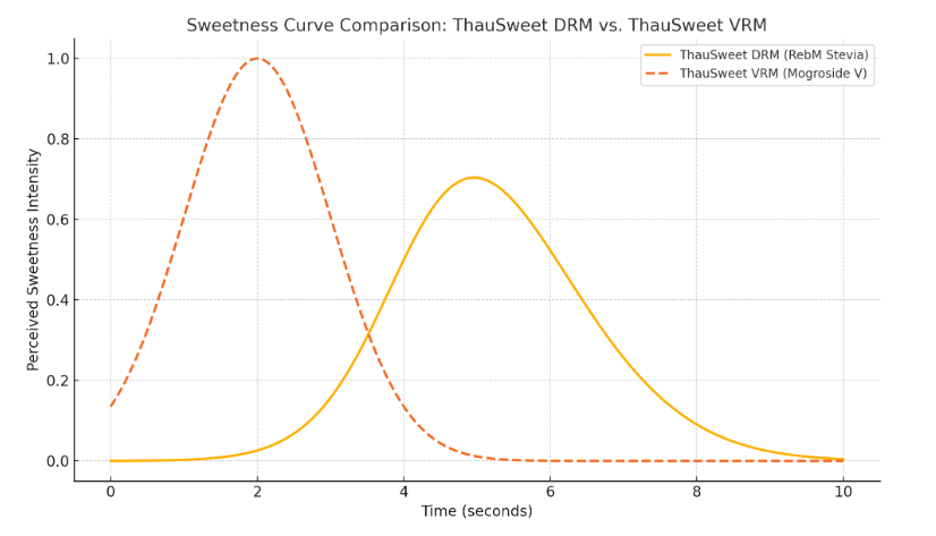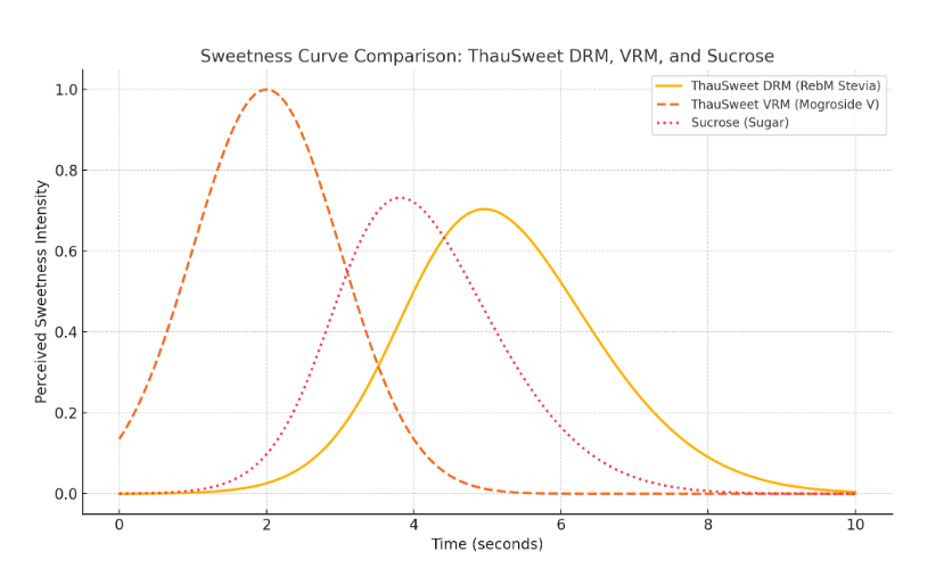By Thom King – Chief Innovations Officer, Icon Foods
When it comes to formulating for clean label sugar reduction, having multiple options for sweetening and flavor modulation is like having a party with all your favorite friends—each one brings something special to the table! Here’s why it’s such a sweet idea:
Sweet Balance: Think of it as a flavor balancing act! Some sweeteners shine in certain recipes while others shine in different ones. By mixing and matching, you can find the perfect three-part harmony that keeps consumers’ taste buds gyrating.
Clean Label Confidence: Like Pete Davidson punching over his weight in dating, these natural sweeteners and flavor modulators align perfectly with the clean label trend to push you ahead. This means your products not only taste great, but also look great on the label—no mysterious ingredients here, only clean label confidence.
Having multiple options for sweetening and flavor modulation in clean label sugar reduction is all about variety, creativity, and connection. It’s the recipe for a flavor party that everyone can enjoy—sweetening things up while keeping it clean and delicious.
Join us in a detailed comparative analysis between ThauSweet DRM and ThauSweet VRM sweetness modulators, focusing on their ingredient compositions and how each modulates the sweetness curve by interacting with taste receptors on the palate:
Comparative Analysis: ThauSweet DRM vs. ThauSweet VRM
1. Ingredient Composition
| Component | ThauSweet DRM | ThauSweet VRM |
| Primary Sweetener | RebM (Rebaudioside M) from Stevia | Mogroside V from Monk Fruit |
| Sweetness Enhancer | Thaumatin (a sweet-tasting protein from katemfe fruit) | Thaumatin (same function in both formulas) |
| Functional Fiber | Cassava Root Fiber (provides body and bulk) | Cassava Root Fiber (identical functionality) |
Sweetness Curve and Taste Receptor Activation
A. ThauSweet DRM (RebM Stevia-based)
- Sweetness Onset:
- Delayed onset, with a gradual sweetness perception beginning a few seconds after contact with the tongue.
- RebM, a highly purified steviol glycoside, binds to the T1R2/T1R3 sweet taste receptor but more selectively and with a longer binding time compared to sugar.
- Sweetness Peak:
- Peaks moderately with a clean, rounded profile.
- RebM is known for lacking the bitterness and licorice-like aftertaste typical of other stevia components (like RebA), leading to a more sugar-like arc.
- Sweetness Duration:
- Extended duration; sweetness lingers on the palate.
- The presence of thaumatin enhances the persistence of sweetness, providing a longer and fuller sweetness tail.
- Mouthfeel Contribution (Cassava Fiber):
- Adds viscosity and body, compensating for the thinness stevia-based systems can exhibit in liquid reduced-sugar formulations.
- Overall Receptor Activation Profile:
- Moderate binding affinity for sweet taste receptors with slow onset and sustained release.
- Thaumatin acts as a taste potentiator, modulating receptor activity to reduce metallic notes and emphasize round sweetness.
ThauSweet VRM (Mogroside V Monk Fruit-based)
- Sweetness Onset:
- Faster onset than RebM; sweetness is perceived almost immediately upon consumption.
- Mogroside V has a strong initial affinity for the T1R2/T1R3 receptors, leading to quicker sweetness activation.
- Sweetness Peak:
- Reaches a high intensity quickly, often perceived as sweeter than sugar at equal concentrations.
- However, it can be spiky or “front-heavy” without blending into solution.
- Sweetness Duration:
- Long-lasting, but with a tapered tail—sweetness decays more sharply than with RebM.
- Thaumatin helps extend this tail and soften the intensity curve for better mimicry of sugar.
- Mouthfeel Contribution (Cassava Fiber):
- Similar to DRM, it provides fullness and smooth texture, mitigating the thinner mouthfeel that monk fruit extracts can produce alone.
- Overall Receptor Activation Profile:
- Mogroside V binds with high potency, creating a sweetness that is more intense but potentially less nuanced.
- Thaumatin serves to balance this intensity, contributing a round, slightly fruity sweetness and harmonizing early peaks.
3. Comparative Sweetness Curve Summary
| Attribute | ThauSweet DRM (RebM) | ThauSweet VRM (Mogroside V) |
| Onset Speed | Slow to moderate | Fast |
| Peak Sweetness | Moderate and smooth | High intensity, potentially spiky |
| Sweetness Tail | Long and sustained | Long but tapered |
| Overall Profile | Gradual rise, clean curve, rounded peak | Quick spike, tapering tail, strong front |
| Taste Receptor Activation | Moderate and prolonged (RebM + Thaumatin) | Strong and immediate (Mogroside V + Thaumatin) |

Sweetness curve comparison:
- ThauSweet DRM (RebM Stevia) shows a gradual onset, rounded peak, and a long, smooth tail—ideal for applications needing a more sugar-like profile.
- ThauSweet VRM (Mogroside V) displays a fast onset, sharp peak, and a tapered sweetness tail, delivering a punchier and more immediate sweetness impact.

Chart with sucrose (table sugar) included for reference:
- Sucrose has a rapid onset, balanced peak, and a short, clean tail, representing the “gold standard” of sweetness curves.
- ThauSweet DRM more closely mimics sucrose’s tail and roundness, though with a slightly delayed onset.
- ThauSweet VRM exceeds sucrose in early intensity but has a sharper taper, making it feel more front-heavy.
4. Application Implications
- ThauSweet DRM (RebM-based) is more suitable for applications where a gradual, clean sugar mimicry is desired, such as dairy, baked goods, or beverages with subtle flavor notes.
- ThauSweet VRM (Monk Fruit-based) works well in applications where a quick hit of sweetness is desirable—like confectionery, chewing gum, or flavor-forward beverages—but may require more balancing to prevent a sweetness “spike.”
Both ThauSweet DRM and ThauSweet VRM leverage the synergy between a high-intensity natural sweetener, thaumatin, and cassava fiber to create a more sugar-like sweetness experience. However, their sensory dynamics differ significantly:
- ThauSweet DRM offers a more rounded, sugar-like sweetness with slower onset and longer duration.
- ThauSweet VRM provides a punchier, faster sweetness that can feel more intense upfront but requires more balancing for complex applications.
The choice between them should be guided by the desired sweetness profile, temporal dynamics, and application context.
Reach out to your Icon Foods representative for ThauSweet VRM and ThauSweet DRM, samples, documentation formulation and usage guidance.
Since 1999 Icon Foods has been your reliable supply chain partner for sweeteners, fibers, sweetening systems, inclusions and sweetness modulators.
Taste the Icon difference.